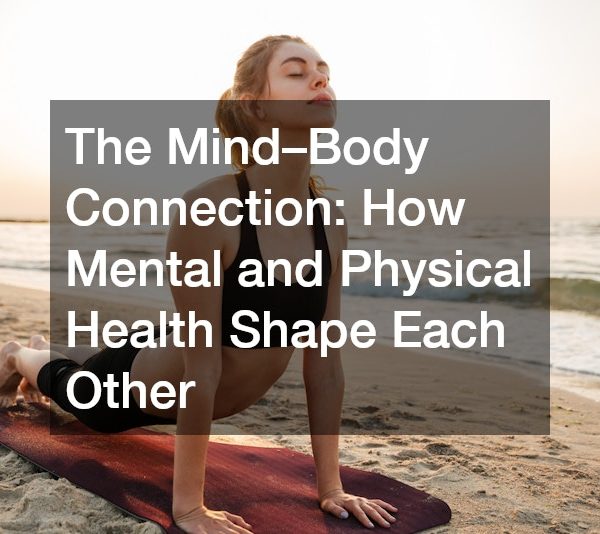The start of a new year signals a time for change and a fresh start. But as we continue to live through this pandemic, everyday life has become more unpredictable and stressful. Regular routines, like morning meditation, become very important then because they help keep you calm and focused throughout the day.
Morning mediation refers to the meditation practices you do at the start of each day, no matter what time you wake up.
Meditating right after waking up has numerous benefits. Not only do you develop a self-care habit, but meditating early sets a strong tone for the rest of your day. The calming activity boosts productivity and promotes better mental health.
Drilling the habit of executing healthy routines into your system right at the beginning of the day will also give you just the right push to start on a positive note.
Your mediation practice doesn’t have to be in the morning; it can be whenever you rise in the morning or retire at end the day. The goal is to do it and to find the best method.
Table of Contents
How to Start Meditating in the Morning
Meditation helps give you a calm mind and body that’s more resilient to all of the stress, tension, and anxiety that you’ll be faced with throughout the day.
Not only will you feel better during the day but meditating also helps people sleep better at night. Developing this habit will help protect you from serious health issues which will, in turn, improve your quality of life.
So here’s an easy 5-minute meditation guide you can use to start your day.
- Sit comfortably in a quiet place with your back straight. If you want, find a pillow to sit on so that your butt doesn’t hurt as much from sitting cross-legged for 15 minutes or longer.
- Look straight ahead and keep your eyes closed or fixated on one point in front of you.
- Breathe deeply using your abdomen, not just your chest.
- Be mindful and feel the air as it goes through your nose, down into your lungs, and back out again. Thought will naturally come up. If they do, ignore them and bring yourself back to your breathing.
- The goal is not to clear your mind completely, which is impossible, but rather to keep bringing your focus back to your breath as you meditate for five minutes or longer.
Additional meditation tips:
- Sit up straight and keep your back straight, this is important because it increases blood flow to your brain which helps you meditate better. It also reduces stress on your lower back.
- Widen or narrow your eyes so that you can focus on one point, which prevents you from getting distracted by everything around you. If this doesn’t work for you try closing your eyes.
- Feel the air coming in through your nose and out of it again, this helps keep your mind focused on something other than your thoughts.
- If you are meditating for more than five minutes it would be a good idea to get up and stretch your legs and arms every few minutes because sitting in the same position for too long is not good for your circulation.
- Try to keep track of how often you get distracted or lose focus on your breathing. You can do this by keeping a piece of paper nearby and marking it whenever you get distracted.
If your mind wanders off more than three times in the first two minutes stop meditating and resume when you’re ready because if you continue while your mind wanders, then it creates more stress rather than reducing it.
Remember that getting distracted is normal. Thoughts coming into your mind is normal. Everyone’s mind wanders at times so just try to keep coming back to focusing on your breathing.
Morning Meditation Techniques

Pranayama
Pranayama is a meditation practice used in yoga that involves breathing exercises. It’s energizing breathwork that helps detoxify and heal both your body and mind simultaneously.
Breathing practices involving pranayama helps in regulating the tone of muscles in the body, which has a therapeutic effect on all nerves in a person’s system.
It regulates our heartbeats, boosts blood circulation in the body, and reduces stress levels among other things.
By using breathing techniques to calm down an agitated mind, yoga practitioners have been able to awaken higher states of consciousness throughout the centuries.
Here’s a guided meditation routine using the pranayama practice to calm your mind.
- Sit comfortably while making sure that you have a straight posture.
- Start inhaling through your nostrils, taking in air to the entire capacity of your lungs.
- Hold the breath for a second longer, constricting a gulp of air at the back of your throat.
- Exhale thoroughly and forcefully using both your nostrils.
- Do repeat for 3 minutes.
Mantra Meditation
Repeating a mantra is an excellent way to calm down agitated thoughts, but it also has other effects on your life.
Repetition of a certain word or sound creates an aura around the people who are making those sounds and helps bring about a sense of focus and oneness in their lives.
Mantras have been used for centuries by Yogis to attain higher states of enlightenment and transcendence through meditation, just like chanting ‘Om’ aims at achieving oneness with the cosmos.
Here’s how you can start.
- Choose a word that you find spiritually uplifting (examples include amma or om).
- Sit up straight with your eyes closed and repeat this sound in your mind (you can do it out loud or whisper it.)
- Keep the mantra going in the background of all your thoughts, repeating them like a running commentary.
- Once you’re done with one round, sit comfortably for a few minutes (or longer if possible) before opening your eyes again.
Loving Kindness Meditation
A nice way to end your morning meditation is by sending out good vibes to all beings around you through loving-kindness mediation.
Here’s a simple seven-step guided meditation to calm the mind and will help you feel rejuvenated throughout the day.
- Begin by sitting up straight while performing deep breathing exercises for about five minutes so that you clear off distracting thoughts from your mind. Imagine your breath as a source of good energy that flows throughout the different parts of your body, healing them and filling you with positivity.
- Next, focus your attention on yourself by picturing confusions, worries, fears, or anger in people around you. Think about how beautiful life is when all this fades away.
- Move the focus to someone who has made an impact in your life (be it family members or friends). Send out waves of love and gratitude for making you feel special. Make this more effective by visualizing their face while imagining bright colors surrounding them through warm-hearted thoughts like “I love him/ her” or “He/She is so caring” etc., according to the person you’re meditating on.
- Turn your focus to someone who is neutral in your life. Think about what they did that made them end up in this category and imagine positive, soothing thoughts of love surrounding them too.
- Next, shift the focus on to people that have hurt you or past relationships where you did not feel loved. Send out waves of forgiving love so that it purifies their soul while you also dissolve all negative feelings related to memories from your mind at this point.
- Now let go of all attachment towards things or emotions which are not within your control by repeating “Let it be” or Om Shanti (Hindu mantras for letting go) repeatedly while picturing yourself surrounded with white light.
- Finally, emit loving thoughts to all beings in the world starting with yourself and then moving on to people you’re close to, neutral people, difficult people, and everyone else on this planet.
By following these simple steps at the start of your day, you will feel rejuvenated throughout bearing in mind that patience is key when practicing meditation for beginners.
Most importantly, don’t go overboard while trying out different techniques so as not to overwhelm your body or mind.
Benefits of Morning Meditation

- Morning meditation boosts your mood
By having at least 5-minute morning meditation, you can set a positive tone for the rest of your day by enhancing positive emotions like optimism, joy, and contentment. - Morning meditation enhances your intuition and perception
By meditating in the morning, you examine your thoughts, emotions, and feeling which then help you understand and detach from them. By doing so, your intuition is enhanced, and you are more likely to see things clearer, helping you to make more sound decisions. - Morning meditation calms your mind
Morning meditation brings a deep sense of calm and control which then reduces your worry and anxiety. - Morning meditation improves concentration and focus
When you meditate, you get a clearer mind and a better handle on things which allows you to remain focused throughout the day. - Morning meditation improves productivity
Meditation enables you to be more in control of yourself and your day which means you have better control over how you respond to things whether they’re stressful situations or temptations. - Morning meditation increases energy
Meditation helps calm the mind and focus your energy in a mindful manner. It also enables you to get a higher quality of sleep during the night which is an excellent way to energize you in the morning.
How to Choose the Right Place to Meditate
It doesn’t really matter where you meditate. You can meditate in your car, on the bus, on your work desk, in churches, in temples, or in a yoga studio.
But to get the most out of the practice you must have a designated area at home where you’re conditioned to meditate deeply, so you can build the habit.
The right environment enhances your ability to focus on yourself without being distracted by sounds or people that may get in the way of your practice.
By choosing one place to meditate, you develop a sense of familiarity with it while also ensuring success in achieving deep concentration. This makes this spot an ideal environment for making morning meditation a daily habit.
When is the Best Time to Meditate?
The ideal meditation time may be different for everyone, but some common factors must be consider. Ask yourself:
– Will meditating at this particular hour interfere with your daily schedule?
– Do you need to create a dedicated space for meditation?
– Which time will enable you to fully commit to the routine?
The following are the times of day that most people meditate.
The morning
For those who like to meditate before their actual day starts, the morning is often an easier time to do it than later in the day.
If waking up early is already part of your routine, then it can be easier to fit in meditation. The morning is also the time when your mind is calmer and less cluttered than later in the day, making it easier to focus on thoughts of gratitude and other positivity-promoting exercises.
The evening
Evening tends to be a more popular choice for meditating because it fits in better with schedules that are already packed. Meditating at night also allows you to clear your mind before retiring, providing a calm end to the day.
The golden hour
Some people prefer to meditate right before or after they eat their main meal of the day. This is typically around the golden hour or the time your body has finished digesting food and before you eat your next meal. During this time, your metabolism is slower and as such, more conducive to meditation.
Be Kind to Yourself
As you build the habit of meditation, be kind to yourself during this process. It’s OK not to be consistent with your practice.
Don’t beat yourself up if you miss a day or two. Meditate with love and patience toward yourself every day without expecting immediate results. Meditation is a form of self-care, it’s meant to relax you, so embrace the process.
If you have not yet found your groove during the weekdays, you can allot time during weekends. Make sure to do 30 minutes of mediation if you’re going to do it solely on the weekend.
What to Do After Meditating
Different people do different things after a calming time to themselves. A good practice would be to take a moment to observe how you’re feeling after a session. Remain seated, standing or on the bed (depending on how you meditate) and check in with your body, observe your breathing.
When you stay in that mindful moment, you’ll be able to take the sense of quiet, focus and energy throughout the day.
You can also listen to some music or do something that will relax you for a couple of minutes. This will help you transition from a meditation state to your routine for the day.
Meditation takes practice. If you don’t see results right away, don’t be disheartened or stressed out. Try to do it every day, and you will form a habit out of it and reap the benefits. Meditation is not a miracle cure but it can make you calmer, less stressed and it can help you be more in touch and in control of yourself.






